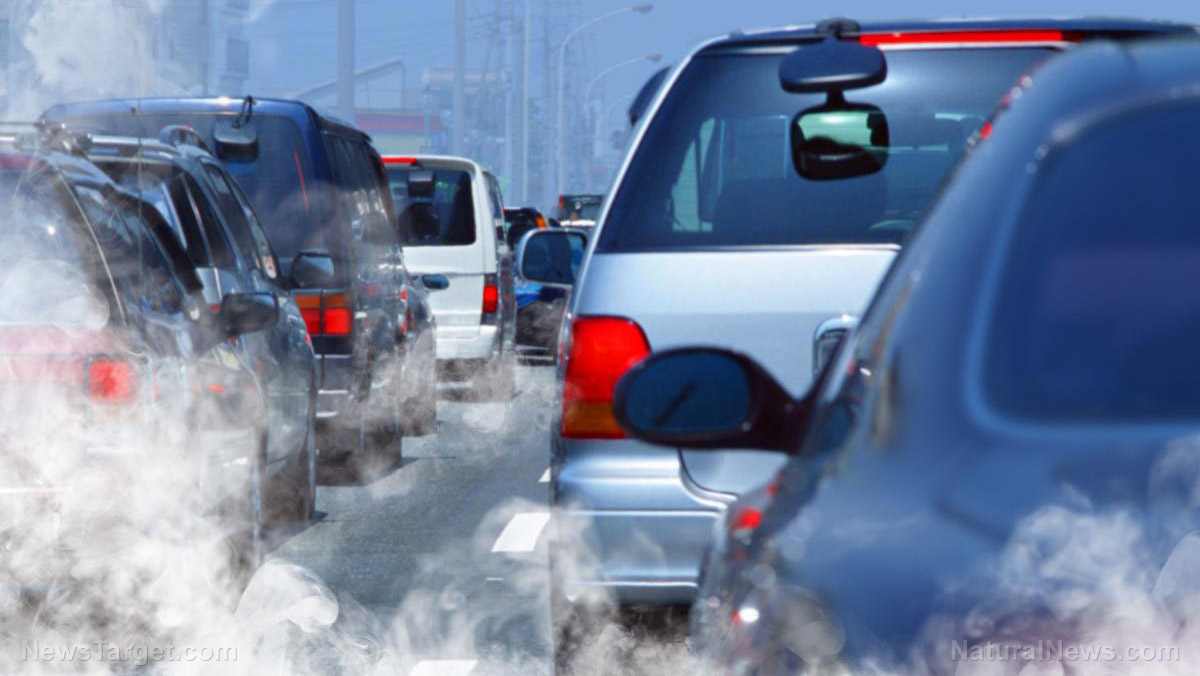New research exposes the effects of air pollution on your kidneys
11/19/2018 / By Zoey Sky

Studies have already confirmed the link between air pollution and respiratory health. Exposure to polluted air increases a person’s risk of developing respiratory problems like asthma and organ inflammation, along with other life-threatening conditions. However, data from a recent study suggests that air pollution also increases the risk of chronic kidney disease, a condition where the kidney becomes damaged or unable to filter blood properly.
The study, which was published in PLOS ONE, involved researchers from the University of Michigan.
Dr. Jennifer Bragg-Gresham, the study’s lead author, said that like smoking, air pollution has toxins that may directly affect the kidneys.
Dr. Bragg-Gresham, who is also an epidemiologist at Michigan Medicine, added that since the “[kidneys] have a large volume of blood flowing through them,” they are the first organs to suffer if anything harms the circulatory system. Individuals with diabetes, heart disease, high blood pressure, or obesity have a higher chance of developing chronic kidney disease. This highlights the need for high-risk patients who live in densely populated or polluted areas to take the necessary precautions. (Related: Exposure to air pollution found to increase risk of chronic kidney disease.)
Why is air pollution bad for you?
Air pollution comprises many harmful substances, but few are as dangerous as fine particulate matter, which is made from various microscopic particles. Fine particulate matter, better known as PM2.5, are fine inhalable particles that have a diameter of about 2.5 micrometers or smaller. By comparison, a single strand of human hair has a diameter of about 70 micrometers, making it 30 times larger than PM2.5.

The particles are almost weightless and can stay in the air longer, which means that people can involuntarily inhale them. If a person is exposed to PM2.5 for extended periods, it can cause health problems.
Researchers looked at data from Medicare claims, as well as air-quality data from the Centers for Disease Control and Prevention. They discovered a link between chronic kidney disease rates and PM2.5 concentration. Dr. Rajiv Saran, a Michigan Medicine nephrologist and the director of the United States Renal Data System Coordinating Center at UM, commented that unlike less polluted areas, heavily polluted areas have higher rates of chronic kidney disease.
Figures cited in the new research showed that over 27 million Americans have chronic kidney disease. Dr. Saran added that chronic kidney disease significantly increases the risk of cardiovascular mortality.
Preventing chronic kidney disease
It’s almost impossible to avoid PM2.5, given you’re exposed to air pollution every day. Polluted air has heavy metals like cadmium, lead, and mercury that can harm the kidneys.
Researchers analyzed earlier studies about chronic kidney disease. One such study was conducted in some coal-mining areas of Appalachia, and findings showed that there was a 19 percent higher risk of chronic kidney disease among men and a 13 percent higher risk in women compared to people who lived in mining-free counties.
Thankfully, PM2.5 levels are much lower in the U.S. compared to other industrialized countries like China and India.
Dr. Bragg-Gresham, who is also an assistant research scientist at UM, said that people who live in countries with higher PM2.5 levels have a higher chance of developing chronic kidney disease. She added that while their research only covered a small range of PM2.5 values present in America, the study data uncovered a notable link between air pollution and the disease.
Always take precautions when exposed to polluted air, especially if you have existing health conditions or if you reside in densely populated or polluted cities. Even if PM2.5 is invisible to the naked human eye, it doesn’t make them any less dangerous.
Dr. Bragg-Gresham concluded that you can limit your exposure to air pollution by wearing a face mask that covers your mouth and nose if you’re traveling in heavily polluted areas. Limit the hours you spend outdoors, and try to avoid commuting in high traffic.
You can read more articles with tips on how to minimize your exposure to pollutants at Pollution.news.
Sources include:
Submit a correction >>
Tagged Under:
chronic kidney disease, CKD, fine particulate matter, kidney health, kidneys, PM2.5, respiratory problems, toxins
This article may contain statements that reflect the opinion of the author





















